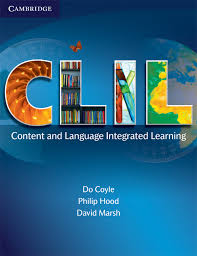I love the topic of motivation in language learning (past posts here, here, and here, for example). In the world of TESOL, however, it’s a little like that old joke about the weather–everyone seems to talk about it but nobody does anything about it. In Japan, I often hear students voicing out loud how they wish they could speak English (even though they are students and even though they are enrolled in an English course at the present). They sound a lot like the people I know who talk about losing weight or exercising more: vague, dreamy, and not usually likely to succeed. TESOL research and literature talks a lot about integrative and instrumental motivation, ideal selves, and willingness to talk, etc., concepts that just seem so far from the practical reality teachers and those dreamy-eyed students really need. So in this post I would like to focus on the positive and practical and provide a list of things to do that improve the chances of success, drawing on formative assessment ideas and general psychological ideas for motivation.The idea is to approach motivating learners the same way one would go about motivating oneself to lose weight or start and stick to an exercise program. Instead of talking about fuzzy motivations, let’s focus on just doing it. The enemy in my sights is much the same enemy that faces the would-be dieter or exerciser, procrastination, a powerful slayer of great intentions.
First of all, let’s get one thing straight: you can’t do much about the motivation kids bring with them to your class on Day 1, but after that, you certainly can. What you and your students do together affects how they think and feel about language learning and themselves. That is, teachers can change attitudes by changing behaviors. And as a teacher, you have a lot of power to change behaviors. As BJ Fogg says, you shouldn’t be trying to motivate behavior change, you should be trying to facilitate behavior change.
Vocabulary learning is the perfect place to try out techniques for motivation success and overcoming procrastination because it is in many ways the most autonomous-friendly part of language learning. It can easily be divided into manageable lists, and success/failure/progress can be fairly easy to observe by everyone. It is also a topic I have to run a training session on this summer and I need some practical ideas for teachers to try out with their students.
OK, here we go. In addition to using teaching techniques that make the vocabulary as easy to understand and remember as possible, try the following:
- Make a detailed plan with clear sub-goals that are measurable and time-based. Break the vocabulary list into specific groups and set a specific schedule for learning them. This provides a clear final target and clear actionable and incremental steps, important tenets of formative assessment. Create a complete list and unit-by-unit or week-by-week lists. Be very clear on performance criteria for success (spelling, pronunciation, collocations, translation, etc.). Make the plans as explicit as possible, and put as much in writing as possible.
- Provide lots of opportunities for learners to meet and interact with the vocabulary. Learners need to actively meet target items more than 10 times each (and more than 20 times in passive meetings) if they are expected to learn them. Recycle vocabulary as much as possible.
- Create a system that requires regular out-of-class study (preview/review). Out-of-class HW assignments should start by being ridiculously small at first (tiny habits–see below), such as write out two sentences one time each. Grow and share and celebrate from there.
- Ensure success experiences. Success is empowering. The teacher’s job is to ensure that learners can learn and can see the results of their learning. Do practice tests before the “real” test, and generally provide sufficient learning opportunities to ensure success (“over-teach” at first if you need to). Lots of practice testing is a proven technique to drive learning, and students need to do it in class and in groups, and learn how to do it on their own.
- Leverage social learning and pressure. Have learners learn vocabulary together, teach and help each other sometimes, encourage each other, and just generally be aware of how everyone else is succeeding. Real magic can happen if a learning community puts its mind to something.
- Have learners share their goals and progress, publicly in class and with friends, family and significant others. Post results on progress boards, challenge and results charts, etc. At a very minimum, the teacher and the student herself should always know where they are and what they need to do to improve.
- Remind learners of the benefits of success. Provide encouragement, especially, supportive, oral positive feedback at times when it is not necessarily expected.
- Make sure that sub-goal success is properly recognized and rewarded. This provides a stronger sense of achievement.
- Make 1-8 as pleasant (fun, energetic, meaningful) as possible.
You may already be doing these things and still not getting the progress you hope for because the students just aren’t studying enough outside of class. Products of their age, they are driven by distractions–the need to check their Twitter feeds, for example, and the pressing issue of incoming LINE comments, or whatever. But they also suffer from the oppression of the same procrastination monster that we all suffer from. Oliver Emberton has a nice post on dealing with procrastination. For teachers, I would like to call attention to the last two items on his list of recommendations: Force a start, and Bias your environment. “The most important thing you can do is start,” Mr. Emberton writes. This is certainly true.
You can counsel them on the need to turn off their devices and “study more.” But unless you give them clear, doable, and manageable tasks and start them in class, and require and celebrate their use, it is unlikely they will get done. BJ Fogg recommends that you facilitate behavioral change by promoting tiny habits. His work makes the establishment of positive habits seem so much easier. You can watch an earlier overview of his method here, or a fun TED talk here. Much of what he describes can only be done by the individual learner, but as a teacher you can set the target habit behavior and you can help learners see the fruits of their newly established habits. Just choose a vocabulary learning strategy, reduce it to it’s simplest form, and provide a place to celebrate success. Then try to grow and celebrate the continued use of these positive habits. This modern world is a hard one to study in. There are really too many distractions too close at hand. It takes real strength, real grit, to resist them and start or keep at something new. Helping students to develop this strength and grit is now part of any teacher’s job description, I think.
If you are looking for more on how to teach vocabulary, including a nice section on web and mobile app tools that can help, Adam Simpson’s blog has a nice post on vocabulary. If you are looking for something that combines the latest in TESOL theory on motivation with practical techniques for the items I listed above, Motivating Learning by Hadfield and Dornyei is the best thing I’ve seen. It has 99 activities to choose from.






